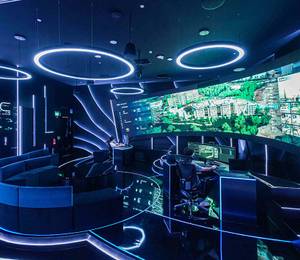The construction of Deep Tunnel Sewerage System (DTSS) Phase 2 in Singapore has started. The national water agency PUB held the groundbreaking ceremony yesterday (20 November) at the site of the project’s first tunnelling shaft at Penjuru Rd.
The deep tunnels in Phase 2 will connect to the existing deep tunnels in Phase 1 serving the eastern part of Singapore and the public sewer network to create one seamless integrated system. The whole of Singapore will be served by the DTSS when Phase 2 is complete by 2025. Used water will be conveyed from the DTSS via gravity to three centralised water reclamation plants for treatment, before it undergoes further purification to produce NEWater, or discharged into the sea.
Five contractors are currently involved in the construction of the first 50 km of deep tunnels and link sewers of the project. They include: Ed Zublin AG (Singapore Branch), Penta-Ocean Construction Co Ltd and Koh Brothers Building & Civil Engineering Contractor (Pte) Ltd Joint Venture, Leighton Contractors (Asia) Limited (Singapore Branch), Nishimatsu Construction Co Ltd, and Shanghai Tunnel Engineering Co (Singapore) Pte Ltd.

100-year expectancy life
To be built using the tunnelling method, this 100 km used water conveyance network for DTSS Phase 2 will run largely under the Ayer Rajah Expressway (AYE), crossing undersea at Tuas Bay and ending at deep inlet shafts within the future Tuas Water Reclamation Plant. A total of 19 TBMs will be used to dig at depths of between 35 and 55 m below ground and under the sea to create 40 km of deep tunnels and 10 km of link sewers. The remaining 50 km of link sewers will be constructed using a micro-tunnelling method known as pipe jacking.
The conveyance system in Phase 2 will incorporate advanced technologies to enhance its operations and maintenance. Designed for an operational life expectancy of 100 years in a corrosive sewer environment, the deep tunnels will be lined for corrosion protection – especially against microbiologically-influenced corrosion, with an additional water-tight membrane coating the tunnel section running undersea, said PUB. The agency added that the deep tunnels will also be the first project in Singapore to use air jumpers in the operations of its air flow management system.
Advanced maintenance features of the deep tunnels include the use of embedded fibre optics for remote sensing and monitoring of structural integrity, and tunnel shafts innovatively designed with gates to isolate tunnel sections for used water flow diversion, enabling safe maintenance access with no disruption to used water conveyance, explained PUB.

“The construction of the conveyance system for DTSS Phase 2 will pose a new set of exciting challenges for us, as we look forward to dig deep to navigate through a variety of ground conditions in the Jurong Formation as well as tunnel beneath existing underground infrastructure and even under the sea,” said Yong Wei Hin, director of DTSS Phase 2, PUB.
“The DTSS is a more cost-effective and sustainable way of meeting Singapore’s used water needs and securing NEWater supply for the future than simply renewing and expanding the existing conventional used water infrastructure. PUB will continue to harness advanced technologies to enhance Singapore’s used water management system and ensure its water sustainability for the future.”
More detailed information on the DTSS Phase 2 will be published in the Jan/Feb 2018 issue of Southeast Asia Construction.
Related article:
First batch of contracts for Singapore’s DTSS Phase 2











